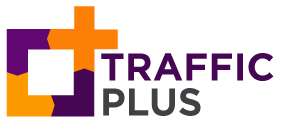
Are you ready to take your SEO game to the next level? Our internal linking strategy guide is here to help you succeed by boosting your website’s visibility and authority.
In this comprehensive guide, we will share our easy-to-implement internal linking strategy to help you navigate the digital landscape and achieve unmatched success in maximizing your website’s SEO power. With our proven techniques, you can experience remarkable growth and establish a strong online presence.
Internal links are hyperlinks that connect different pages within the same website. They play a crucial role in SEO as they assist search engines in understanding your website’s structure, passing authority from one page to another, and enabling users to navigate through your site easily.
There are various types of internal links you can utilize to optimize your internal linking strategy. Navigational links help users find their way around your site, footer links provide additional navigation options, contextual links offer relevant information within the content, and sidebar links provide supplementary resources. By strategically incorporating these different types of internal links, you can enhance the effectiveness of your internal linking strategy.
To ensure your internal linking strategy is impactful, it is important to follow best practices. By focusing on engagement, extreme topical relevance, adding context to the links, making each link unique, and trimming low-value links, you can improve engagement metrics, increase rankings, and enhance the overall SEO performance of your website.
Implementing an optimal, SEO-friendly hierarchical structure is crucial for improving website organization and enhancing user experience. By ensuring a logical flow from one section to another, you create a seamless navigation experience for your visitors, making it easier for search engines to crawl and understand your content.
In conclusion, implementing an effective internal linking strategy is a vital component of achieving SEO success. By optimizing your internal links, you can boost your website’s rankings, drive organic traffic, and establish your website’s authority within your industry. With our easy-to-implement techniques, you can navigate the digital landscape and experience remarkable growth in your online presence.
Understanding Internal Links and Their Importance for SEO
To grasp the significance of internal linking for SEO, we must first understand what internal links are and why they matter to search engines, website structure, and user experience. Internal links are hyperlinks that point to different pages on the same website. They serve as pathways that connect various parts of your website, allowing users to navigate through your content easily.
From an SEO perspective, internal links play a critical role. They help search engines understand the structure of your website, enabling them to crawl and index your pages more effectively. When search engines find internal links, they use them to determine the importance and relevance of each page. By strategically placing internal links, you can pass authority from one page to another, boosting the overall authority of your website.
Not only do internal links benefit search engines, but they also enhance the user experience. By providing clear navigation paths, you make it easier for visitors to find the information they’re looking for. Internal links allow users to explore related content, keeping them engaged on your site for longer periods. When users spend more time on your website, it sends positive signals to search engines and can lead to improved rankings.
How Internal Links Impact Website Structure and Authority
| Website Structure | Authority |
|---|---|
| Internal links help organize your website’s content into a logical structure. They establish relationships between different pages and sections, making it easier for both users and search engines to navigate and understand your site. | By strategically linking from high-authority pages to others, you can pass some of that authority to the linked pages. This helps establish your website as a reliable and authoritative source within your industry. |
In summary, internal links are an essential element of any SEO strategy. They enhance website structure, improve user navigation, and contribute to search engine rankings. By implementing internal linking best practices, you can maximize the effectiveness of your internal links and boost your website’s SEO performance. So, start harnessing the power of internal links today and watch your website thrive.
Types of Internal Links to Optimize Your Strategy
To optimize your internal linking strategy, it’s important to understand the different types of internal links available and how they can be leveraged to improve navigation and engagement on your website. Utilizing these various types strategically can enhance the effectiveness of your internal linking strategy:
Navigational Links
Navigational links play a crucial role in helping users find their way around your website. By including clear and intuitive navigation menus, visitors can easily access different sections and pages, ensuring a seamless user experience.
Footer Links
Footer links provide additional navigation options at the bottom of your pages. Including relevant links in the footer can help users discover more content, improving their overall engagement on your site. It’s important to keep the footer clean and well-organized to avoid overwhelming users with too many options.
Contextual Links
Contextual links are hyperlinks embedded within your content that provide additional relevant information. These links help users further explore related topics and enhance their understanding of the content they’re reading. By strategically placing contextual links, you can guide users to other valuable resources on your website.
Sidebar Links
Sidebar links are typically found on the side of a webpage and provide supplementary resources or recommendations. These links can be used to highlight popular or related content, encouraging users to explore more of your website and increasing their time on site.
By incorporating these different types of internal links into your website’s structure, you can optimize your internal linking strategy and improve user navigation and engagement. Remember to prioritize engagement, extreme topical relevance, and uniqueness in your link placement to maximize the impact of your internal links. By trimming low-value links and ensuring a logical flow throughout your website, you can enhance the overall SEO performance and user experience of your website.
| Type of Internal Link | Description |
|---|---|
| Navigational Links | Links that help users navigate through different sections and pages of a website. |
| Footer Links | Links placed in the footer section of a website that provide additional navigation options. |
| Contextual Links | Links embedded within the content of a webpage that offer additional relevant information. |
| Sidebar Links | Links placed in the sidebar section of a webpage that provide supplementary resources or recommendations. |
Best Practices for Maximizing the Effectiveness of Internal Links
Ready to take your website’s SEO performance to new heights? Discover the best practices that will maximize the effectiveness of your internal linking strategy and propel your rankings to the top of search engine results.
When it comes to internal linking, engagement is key. Aim to provide value to your users by linking to relevant and high-quality content within your website. By doing so, you can improve user experience, encourage them to explore more pages, and ultimately increase engagement metrics, such as time on site and pages per session.
Another important factor to consider is topical relevance. Make sure the anchor text and context surrounding your internal links accurately reflect the content of the page you are linking to. This not only helps search engines understand the relevance of the linked page but also enhances the user experience by providing them with valuable information.
Adding context to your internal links is also crucial. Instead of using generic phrases like “click here,” provide descriptive anchor text that gives users a clear idea of what they can expect when they click on the link. For example, instead of saying “learn more,” you can say “discover our comprehensive guide to internal linking strategies.” This not only improves user experience but also helps search engines understand the content of the linked page.
Trimming low-value links
Finally, it’s important to regularly review and trim low-value internal links. These are links that don’t provide much value to users or search engines. By removing or redirecting these links, you can optimize your internal linking structure and ensure that every link on your website serves a purpose.
| Best Practices for Maximizing Internal Links |
|---|
| Focus on engagement |
| Aim for extreme topical relevance |
| Add context to your links |
| Create unique links |
| Trim low-value links periodically |
By following these best practices, you can improve engagement metrics, increase rankings, and enhance the overall SEO performance of your website. Implement these strategies and watch as your internal linking strategy takes your website to new heights in the digital landscape.
Implementing an Optimal, SEO-Friendly Hierarchical Structure
Enhance your website’s organization and provide a seamless user experience by implementing an optimal, SEO-friendly hierarchical structure that captures the attention of both search engines and visitors. A well-structured website not only helps search engines understand and index your content more effectively but also guides users through your site, ensuring they find the information they need effortlessly.
Organize your content logically
Start by organizing your content into relevant categories and subcategories. This logical structure creates a hierarchy that allows search engines to understand the relationships between different pages on your site. Consider using descriptive keywords in your URLs and page titles to further enhance the clarity of your website’s structure.
For example, if you have an e-commerce website selling various types of shoes, you can have a main category page for “Men’s Shoes” and subcategory pages for “Athletic Shoes,” “Dress Shoes,” and “Casual Shoes.” Under each subcategory, you can have individual product pages.
Optimize navigation menus
Make sure your navigation menus are intuitive and user-friendly. Include clear and concise labels that accurately represent the content of each section. Utilize drop-down menus or expandable navigation options to provide additional subcategory links, allowing visitors to easily explore different sections of your site. This helps search engines crawl and understand the structure of your website, ensuring all pages are indexed and accessible.
Utilize internal linking strategically
Internal linking plays a crucial role in creating a cohesive hierarchical structure. Link relevant pages together using descriptive anchor text that reflects the content of the target page. This not only helps users navigate through your site but also distributes authority and relevance throughout your content. Incorporate contextual links within your content to provide additional information or related resources, further enhancing the user experience and encouraging visitors to stay on your site longer.
| Type of Internal Link | Description |
|---|---|
| Navigational Links | Help users find their way around your site by providing clear links to different sections and categories. |
| Footer Links | Offer additional navigation options at the bottom of each page, ensuring visitors can easily access important sections of your site. |
| Contextual Links | Embed relevant links within your content to provide more information or direct users to related articles or resources. |
| Sidebar Links | Provide supplementary resources or recommendations in the sidebar, enhancing the overall user experience. |
By implementing an optimal, SEO-friendly hierarchical structure, you can improve your website’s organization, enhance the user experience, and make it easier for search engines to crawl and index your content. This structured approach not only benefits your SEO efforts but also helps visitors find what they need efficiently, increasing engagement and conversions on your site.
Remember that maintaining the hierarchy and structure of your website is an ongoing process. Regularly review and update your internal linking strategy and navigation menus to accommodate new content and changes in user behavior. By continuously optimizing your website’s structure, you can stay ahead in the digital landscape and provide a seamless experience for both search engines and users.
Conclusion: Achieve SEO Success with an Effective Internal Linking Strategy
Don’t let your website get lost in the vast digital landscape. By implementing an effective internal linking strategy, you can boost your SEO efforts, increase your rankings, and drive organic traffic to your website, ultimately achieving remarkable success in the online realm.
Internal links are the backbone of your website’s structure, connecting different pages and guiding search engines through your content. They help search engines understand your site’s hierarchy, pass authority from one page to another, and improve user navigation.
To maximize the effectiveness of your internal links, it’s important to focus on engagement and extreme topical relevance. Each internal link should provide valuable context within the content, making it easier for both users and search engines to understand the purpose and relevance of the linked pages.
Making each internal link unique and trimming low-value links further enhances your SEO performance. By streamlining your internal linking strategy, you can improve engagement metrics, increase rankings, and establish your website’s authority in the digital landscape.
So, don’t overlook the power of internal links. Implement an effective internal linking strategy today and watch your SEO success soar as you boost your rankings, drive organic traffic, and establish your website as a trusted authority in your industry.

Lauren Richmond is a leading digital marketing expert at Traffic Plus, a dynamic firm dedicated to revolutionizing online presence for businesses of all sizes. With a deep passion for online growth and an expert grasp of cutting-edge marketing strategies, Lauren excels in crafting tailored solutions that drive meaningful website traffic.

